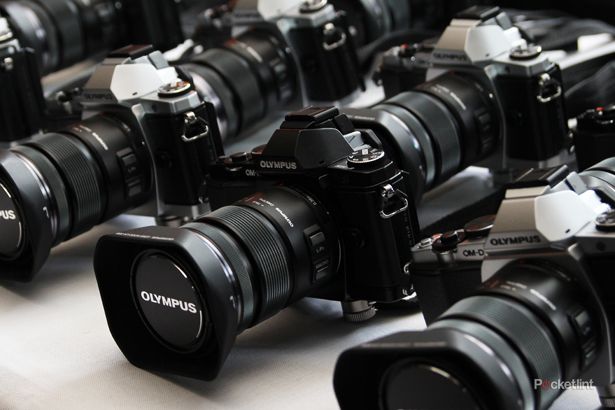Olympus is using the tagline "the beginning of the new" to describe its latest camera. The OM-D line is new and this model, the E-M5, is the first of a more advanced breed of compact system camera. We spent a day with Olympus's new Micro Four Thirds camera to get to grips with all it has on offer.
Whether you are an advanced or casual user, the Olympus E-M5 is packed full of features. We've picked out our favourites that really impressed and mostly they're features unique to the E-M5.
Livebulb
If you've done any night shooting then blub exposure will be familiar to you. But once you get past the metered exposure range there is a degree of guesswork with using bulb. Not with Livebulb, however.
As the name suggests, this lets you set up the camera via manual controls for a long exposure, but rather than having to look at a blank screen, you get to see the picture appearing before your eyes. Under- or overexposed shots will be a thing of the past, because you can end the shot whenever you want.

As you can see, the results are excellent and it's incredibly easy to use. A tripod is an absolute must, however, and a cable release is recommended to avoid any camera shake. Although you can achieve the same results with long exposures on any reasonable camera, Livebulb makes it much easier, but writing to the memory card did seem a little slow.
5-axis image stabilisation
One of the headline features of the new OM-D, we found the 5-axis stabilisation to be very effective. It works by offering sensor shift technology in five planes and if you take the lens off the front of the camera, you can actually see the sensor responding as you move the camera around.
Toshiyuki Terada, manager of SLR product and marketing at Olympus, boasted that in movie capture the image stabilisation would give you a result like a steadicam.
That might be taking it a little too far, but we're impressed with the results none the less. We tested the new camera walking through the streets of Amsterdam and were really impressed with the stability of the results, with little sign of wobble.
Unfortunately Olympus won't let us share this video with you because the firmware isn't final, but image stabilisation certainly seems to be working well.
Live tweaking of curves
On the top of the E-M5 is a function button with an icon indicating that it can be used to instantly access highlight and shadow curves. Using a bit of digital magic, you can alter these curves to get the shot you want. Usually this is something that would be done post-shooting in a package like Photoshop, but this is a quick and easy way to get instant results from the camera.

Pressing the button brings up a graph on screen allowing you to tweak the highlights and shadows to your liking. In the example above we've increased the weight of the shadows for a more dramatic effect on this model.
Once you've made an edit to curves, the camera remembers and places an indicator on the display to remind you that you've tinkered with things. To put them back to normal you will have to go in and level the graph out again, or all your subsequent shots will be shot at the adjusted levels.
Again, some rival models will let you edit images after you've taken them and you can achieve similar results via other means, but this is a very simple approach.
9fps, movie echo
The OM-D has a new relationship with motion. Not only does it offer you the IS mentioned above, but it also gives you 9fps shooting speeds at full resolution. This is another arrow in the quiver of the E-M5, meaning it will appeal more to sports fans, or just those with kids that never stop. Below we've put four images from a nine-shot action sequence of freerunners.

In addition to giving you fast photo capture, there is another effect called echo that you can apply to movies. This will create a motion ghosting effect in your videos and is a great way to add a little interest to moving subjects. We tried the high speed shooting and the echo effects with skateboarders and freerunners, with some terrific results.
Again, we can't show you the video of the echo effect, but it is really easy to use by pressing the arrow button when in video capture mode.
Art Filters
Art Filters have long been a theme of Olympus' Micro Four Thirds cameras and we reckon they are among the most creative out there. Offering a few new options in the OM-D, as well as various settings levels to change the result of a particular filter, you can easily make a dull scene interesting. The candle below was shot using the dramatic effect.

There is a new Key Line option, which is very much like the common "posterise" you'll find elsewhere, but it preserves important dividing lines. Terada told us that it was inspired by Japanese Manga comics.
In addition to all the Art Filters, there is a new option called Art Filter Bracketing. It will take your shot and then apply all the Art Filters to it, so you get a range of different effects. It sounds pointless, but it can give you some interesting results, especially if you hadn't thought about applying a particular filter in a particular way. The downside of Art Filter Bracketing is that you suddenly have lots of versions of the same image, and writing to the card does seem to be fairly slow.
You can check out our first impressions of the Olympus OM-D E-M5 in more detail right here.

